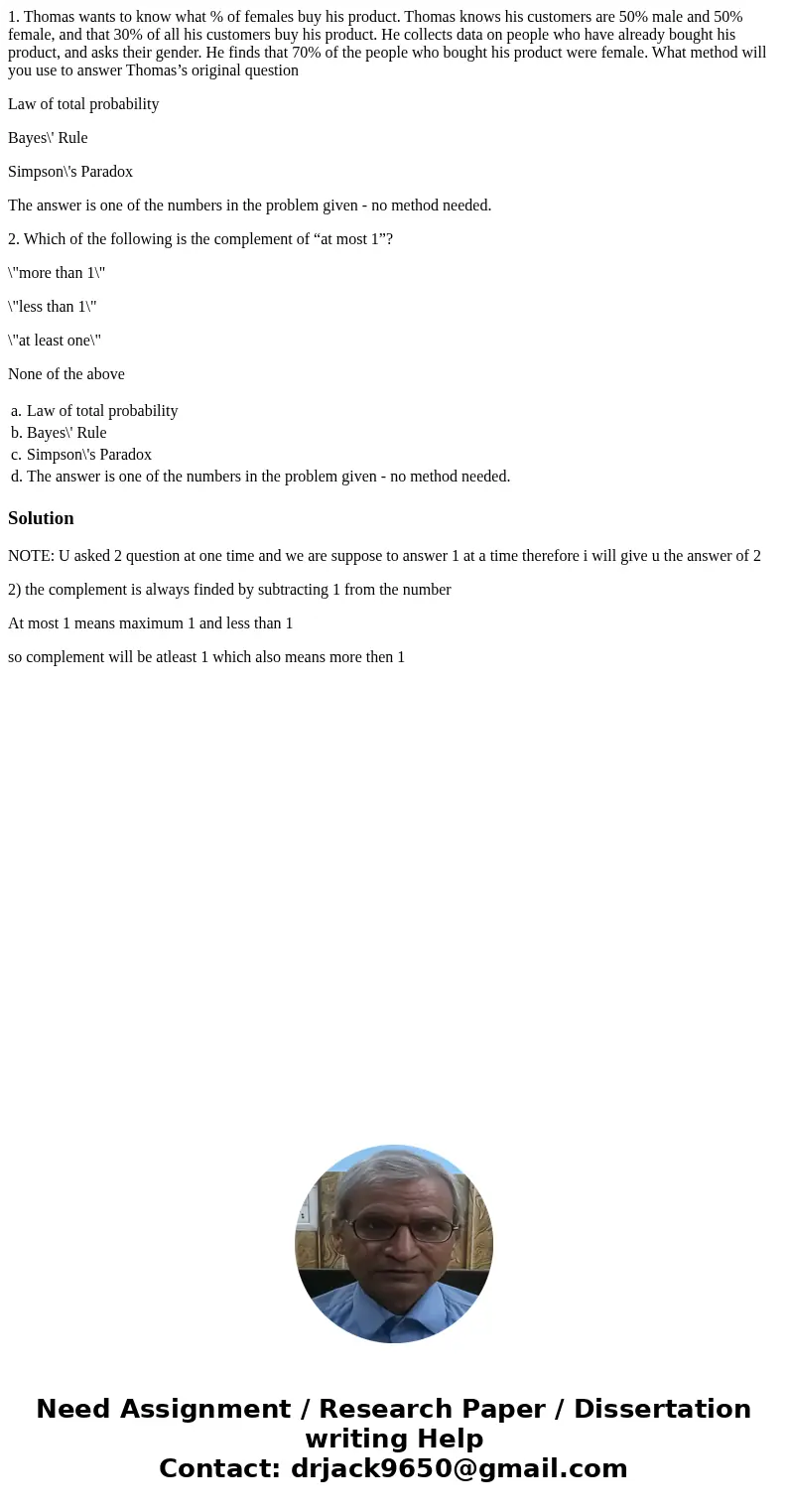1 Thomas wants to know what of females buy his product Thom
1. Thomas wants to know what % of females buy his product. Thomas knows his customers are 50% male and 50% female, and that 30% of all his customers buy his product. He collects data on people who have already bought his product, and asks their gender. He finds that 70% of the people who bought his product were female. What method will you use to answer Thomas’s original question
Law of total probability
Bayes\' Rule
Simpson\'s Paradox
The answer is one of the numbers in the problem given - no method needed.
2. Which of the following is the complement of “at most 1”?
\"more than 1\"
\"less than 1\"
\"at least one\"
None of the above
| a. | Law of total probability |
| b. | Bayes\' Rule |
| c. | Simpson\'s Paradox |
| d. | The answer is one of the numbers in the problem given - no method needed. |
Solution
NOTE: U asked 2 question at one time and we are suppose to answer 1 at a time therefore i will give u the answer of 2
2) the complement is always finded by subtracting 1 from the number
At most 1 means maximum 1 and less than 1
so complement will be atleast 1 which also means more then 1

 Homework Sourse
Homework Sourse